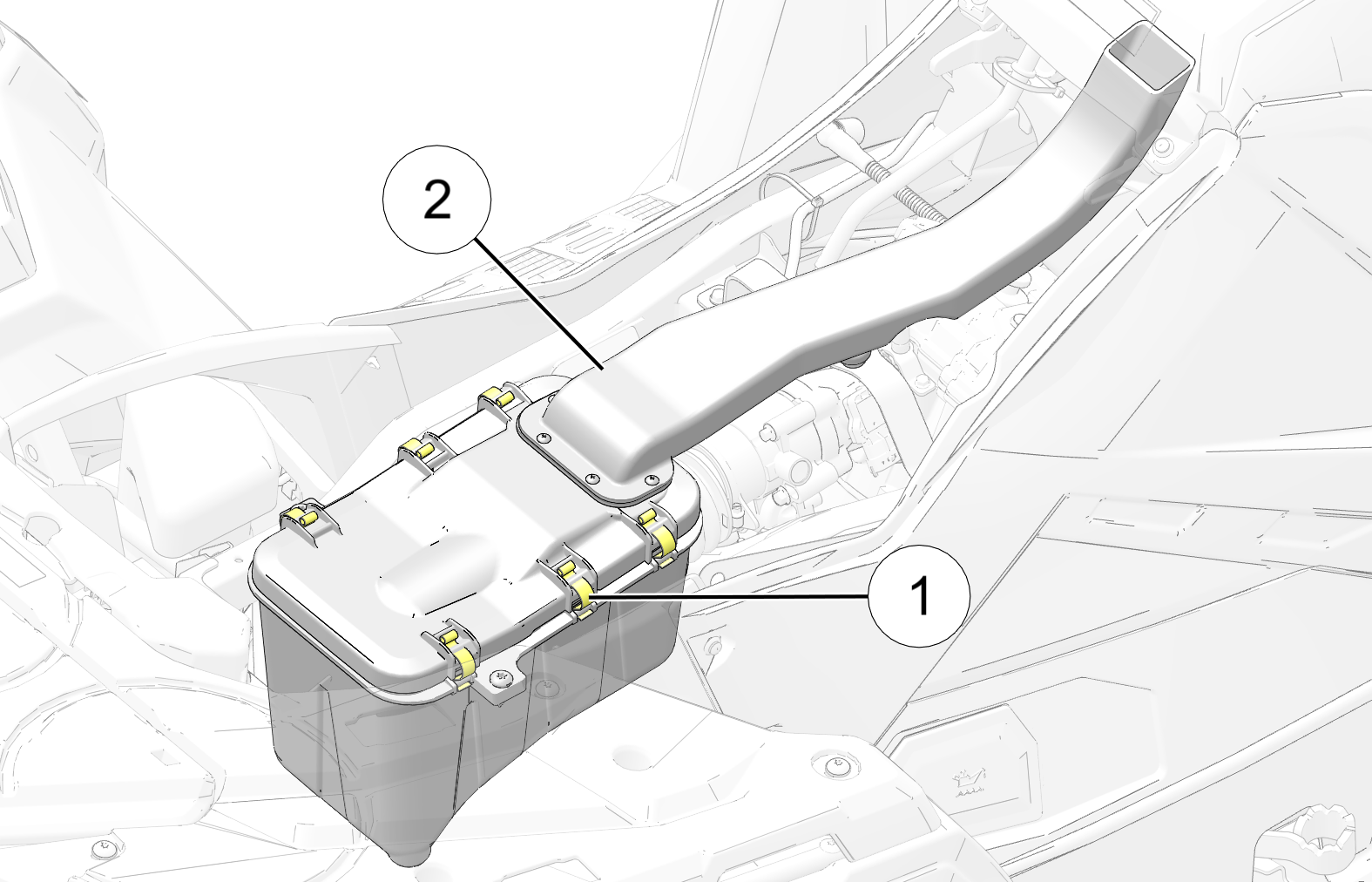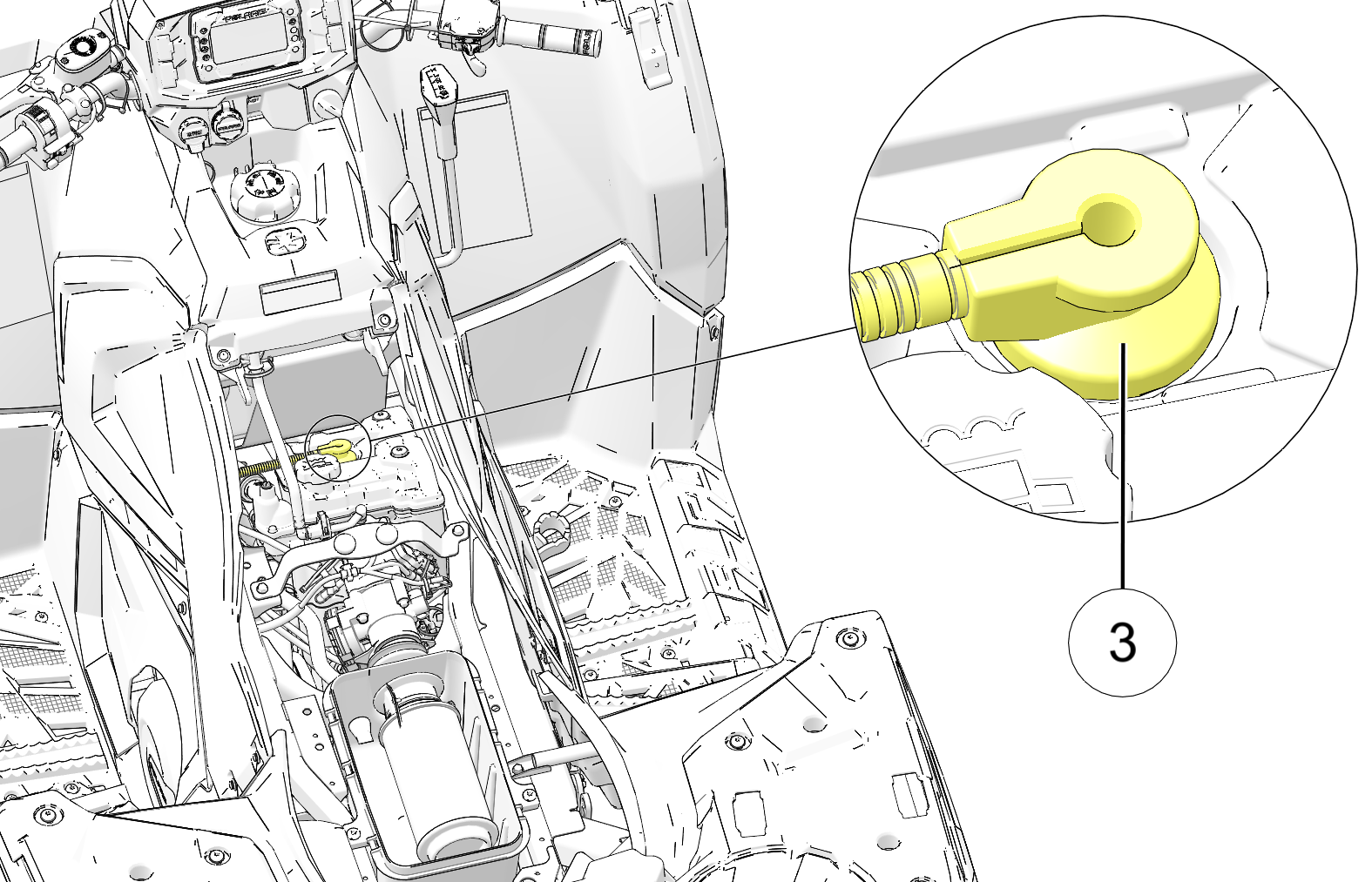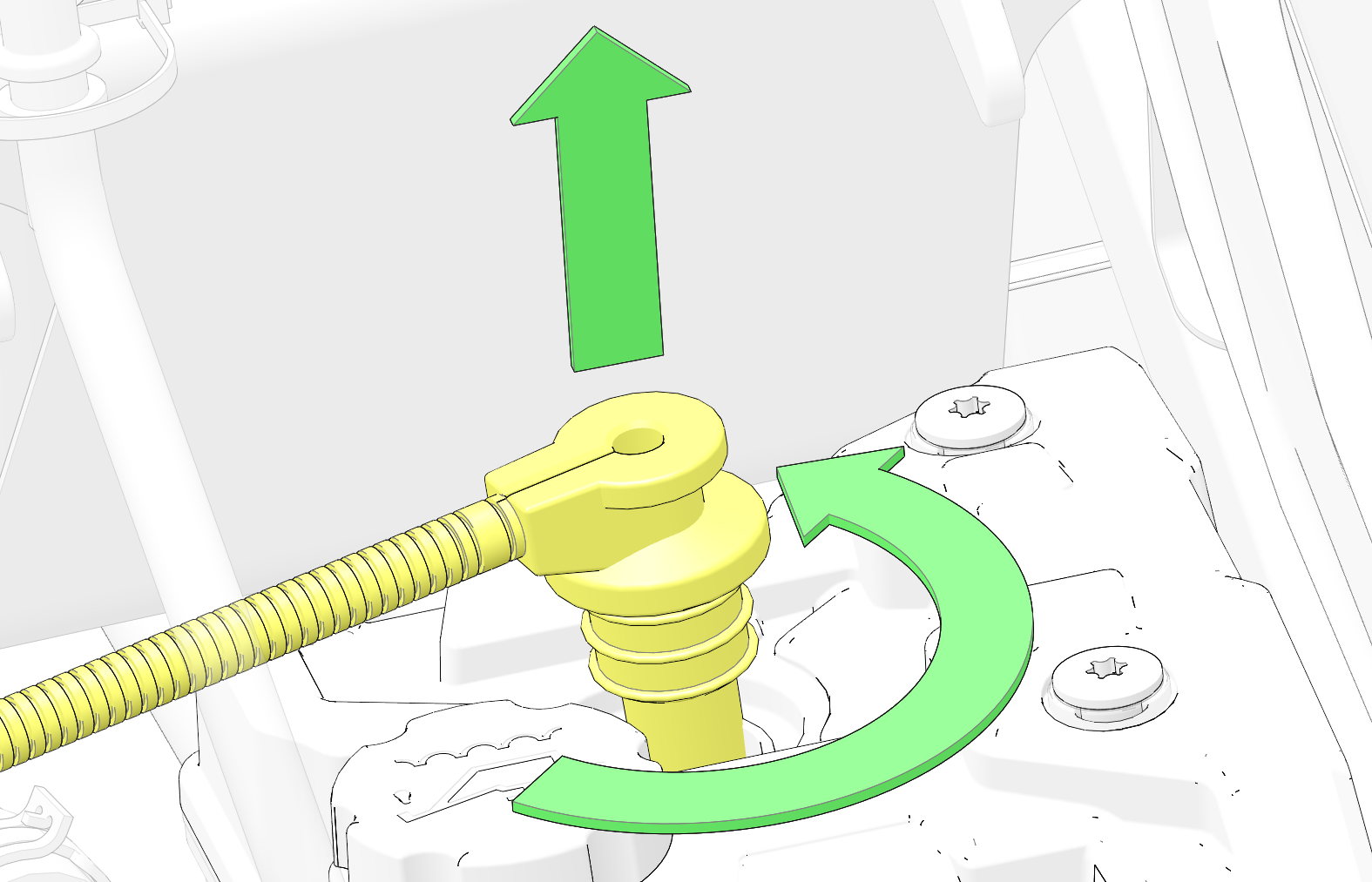Spark Plug Service
-
Position the vehicle on a level surface. Put the transmission in PARK (P) and lock the temporary brake lock.
-
Allow the engine to cool completely.
-
Remove the seat.
-
For ease of access to the spark plug cap, remove the six clips 1 from the air box cover and remove the cover 2.

-
Clean the area around the spark plug cap 3 so no dirt or debris falls into the engine.

-
Remove the spark plug cap from the spark plug by rotating the cap 1/4 turn and pulling it upwards.

-
Clean out the plug wells with compressed air to remove any loose dirt or debris.
-
Using a spark plug socket, carefully remove the spark plug by rotating it counter-clockwise.
-
Inspect the electrodes for wear and carbon buildup. Look for a sharp outer edge with no rounding or erosion of the electrodes. See Spark Plug Inspection
for more information. -
Clean the spark plug with electrical contact cleaner or a glass bead spark plug cleaner only.
IMPORTANTA wire brush or coated abrasive should not be used.
-
Inspect and adjust the spark plug gap if needed. Refer to the Specifications chapter for the recommended spark plug type and gap for your vehicle.
-
If necessary, replace the recommended spark plug.
-
Install the spark plug into the engine and torque to specification.
IMPORTANTDo not apply anti-seize. -
Apply a small amount of dielectric grease or petroleum jelly to the spark plug cap and install the cap.
-
Make sure the wire is pushed down all the way so that it fully engages the spark plug.
-
Install the air box cover and secure with the clips.
-
Install the seat. See Seat Installation.
-
Start the engine to ensure proper operation.